Mandu and Maheshwar are two gems of Madhya Pradesh. It was always there in my to do list while visiting this central state. Maheshwar is situated on the bank of river Narmada and Mandu is endowed with a very attractive natural scenery with lot of water bodies.
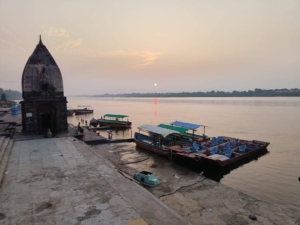
Beauty of Maheswar is unmatched during sunrise with the backdrop of famous Maheswar fort (or Holkar fort) along the river Narmada. It was built by Rajmata Ahilyabai. She built hundreds of temples and Dharmashalas throughout India, Rani Ahilyabai was a great pioneer, she rebuilt Kashi Vishwanath temple after Aurangzeb destroyed it. Although this fort has maratha architecture, the architecture of maheswar ghat has a mixture of Maratha, Rajput, and Mughal styles.
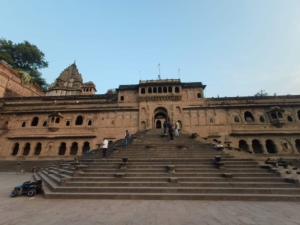
We reached the banks of river Narmada right next to Holkar fort for the sun rise. It’s a very holy place and main pit stop for people doing Narmada Parikrama. Maheshwar means “abode of Mahesh” who is a peaceful incarnation of Lord Shiva.
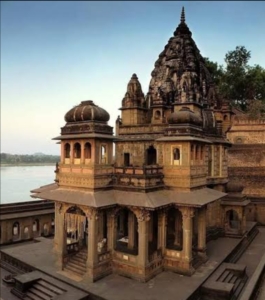
It’s very popular among the devotee to take a dip in this holy river and we didn’t miss it too. water was cold but very refreshing. This place is also known as Varanashi of central India. Sunrise was something that cannot be missed here.
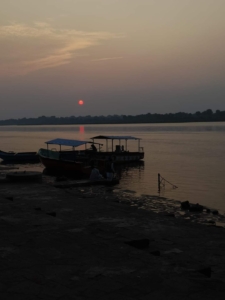
We visited the Shiva temple near by and mediated for a bit near the river. One could see hundreds of pilgrims, there were some Sadhus also doing their morning prayers.
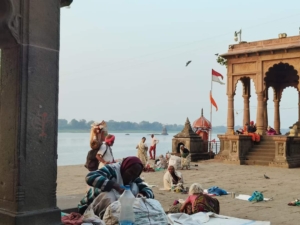
Walked along the banks enjoying the architectural wonder of this fort. You can take a boat ride as well on the river. There are some small Ashrams as well which are mainly for the pilgrims who can stay for free and mediate.
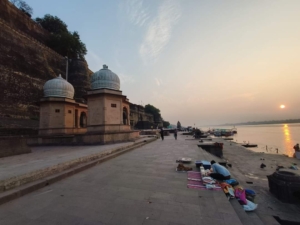
One important thing that cannot be missed in Maheshwar is “maheswari handloom sarees”. It is assumed that the very first Maheshwari sari was designed by Ahilya Bai. Being a designer herself, in 1760, the queen outsourced talented handloom weavers from Surat and Mandu to work for her empire. Today this place is world famous for its maheswari saree.
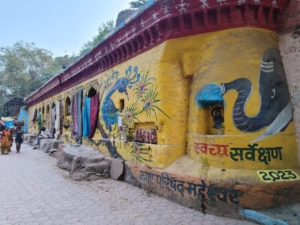
Our next stop was Mandu, it is an ancient jewel, a dream place for every historian, this picturesque city offers a memorable experience through its iconic monuments, palaces and forts. From maheswar we drove for an hour and reached Mandu.
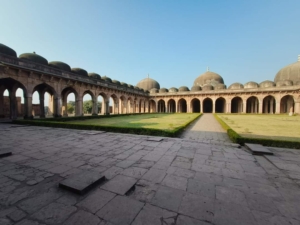
Our first stop was Jami Masjid, built during the reign of Hoshang Shah and completed during the reign of Mahmud Khilji in 1454. The doorway has an inscription written on it which indicates that the mosque was modelled on the mosque of Damascus.
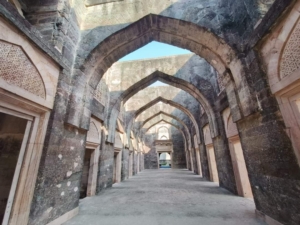
Besides the Jali work, the fine panorama of domes and arches facing the courtyard are mesmerizing to see. This monument is considered as the biggest Afgani architecture in India.
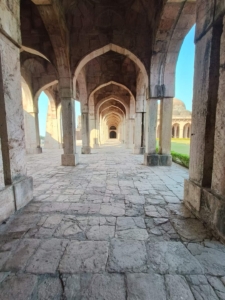
After this we also visited the Ashrafi Mahal and Hoshang Shah’s Tomb. It said that on Full Moon Night, when the moon rises, one can see the moon through the porch arch. With every step, the moon rises until it looks like a coin through the arch. Hence, the name Ashrafi Mahal.
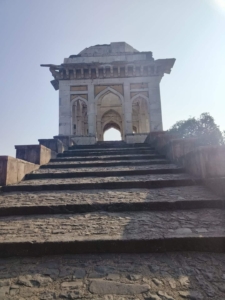
Another story goes that Ghiyathuddin, son of Mahmud Khalji, placed gold coins on the steps, which his harem ladies/wives collected and so remained slim. Near Asrafi Mahal is another tomb called Hoshang Shah, which is considered to be India’s first marble tomb and the construction dates back to the 15th century. This imposing tomb was a talk of the town when it was made and before the construction of Taj Mahal, Shah Jahan even sent his architects there to examine it.
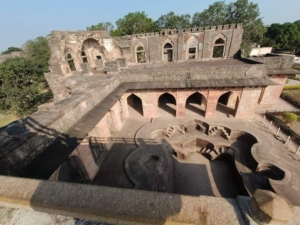
Then we went to the most important place in Mandu, Baz Bahadur Palace and Roopmati’s Pavilion. Baz Bahadur Khan was the last Sultan of Malwa Sultanate. He was defeated by Mughals and then went on exile. But again fought back Mughals with help of other kings but the victory was only short lived.
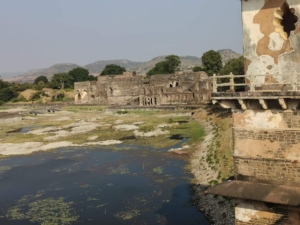
He fell in love with the beautiful Hindu shepherdess called Roopmati and also build the Rewa Kund which is a reservoir at Mandu, equipped with an aqueduct to the Narmada and this also ensured regular water supply to Roopmati Pavilion. It is believed that Rani Roopmati worshipped river Narmada and she came to this kund to pray every day. Mughals defeated him and captured his Hindu queen Roopmati, who killed herself at this turn of events.

Baz Bahadur Palace is an architecture blend of Rajputs and Mughals. This palace was actually built far before Baz Bahadur came into power. Inscription at the palace entrance gate describes its construction to Sultan Nasiruddin Shah in AD 1508-09.
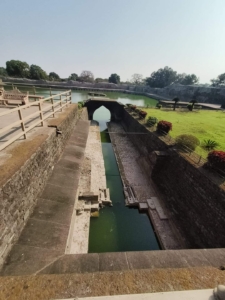
we will find an octagonal pavilion with arches which overlooks an garden area where marks of history can still be seen. Their are steps that lead to spacious terrace with boundaries which offers a breathtaking view of Roopmati Pavilion in foreground and beautiful countryside view.
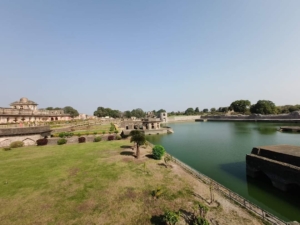
The water management system at Mandu was a need as rainwater was its only source of water. The water Management System at Mandu comes in the form of 1200 tanks with different sizes and shapes. Most of them are still intact and if you go during monsoons, you can see them full of water.
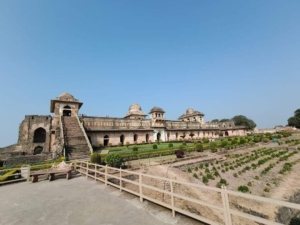
Jahaz Mahal which was considered harem(ladies quarters). It is said that more than 15000 women lived there, without being seen from outside. The womaniser kings lived with all of them.
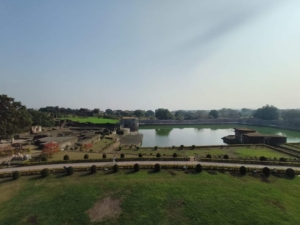
But important part of Jahaz Mahal is the palace is positioned between two man made lakes Munj and Kapur. They serve as natural reservoirs and are connected to each other through an underground stone drain lined with lime and terracotta.
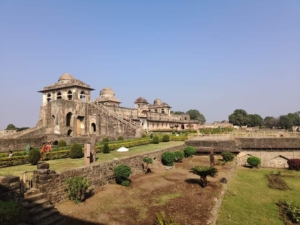
The terrain is mountainous so there is uneven water levels, a causeway was built between the tanks at water level to ensure an equal distribution of water between the two. When Munj tank overflowed, its waters were brought to a central reservoir which emptied enough water into Kapur tank to keep the water levels balanced.

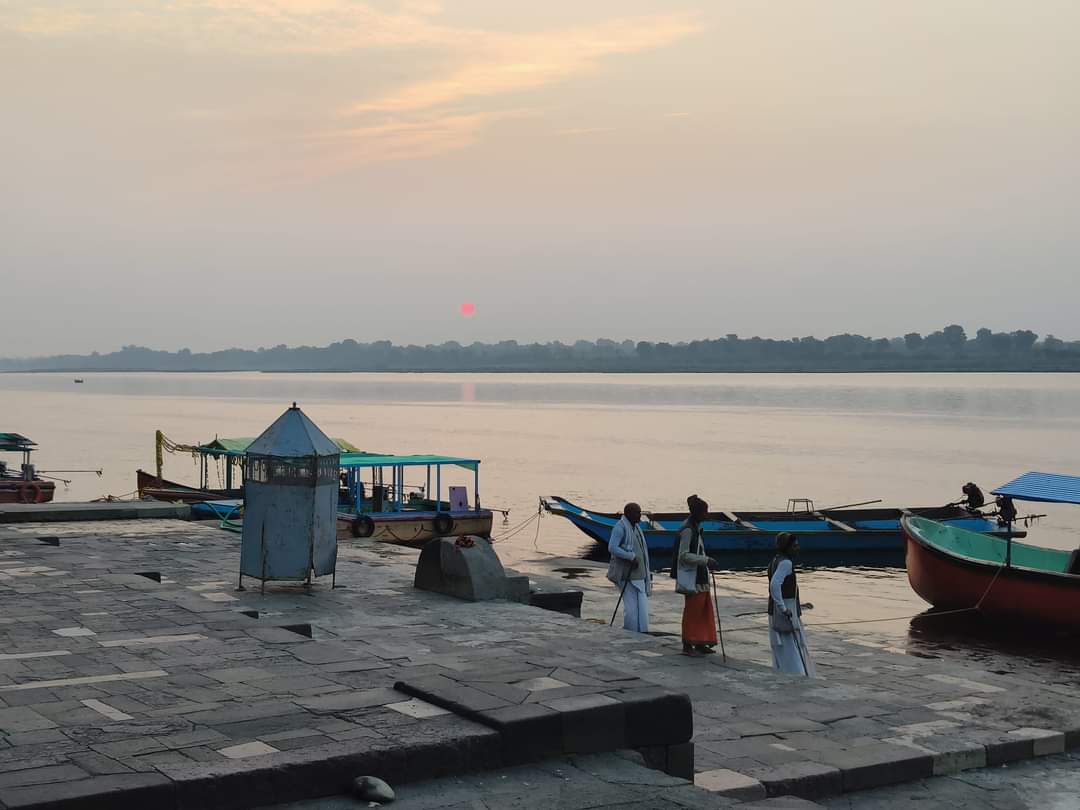
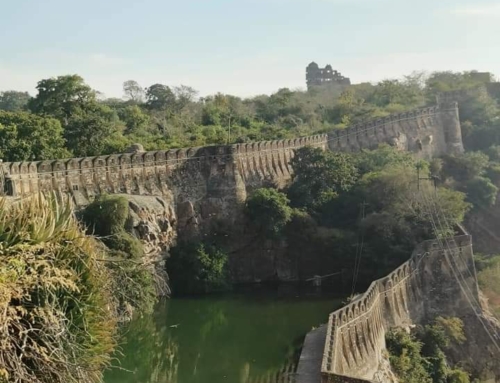

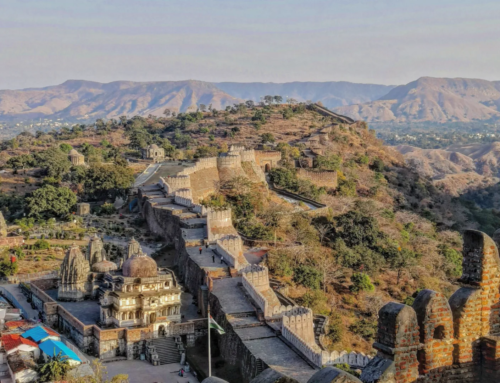
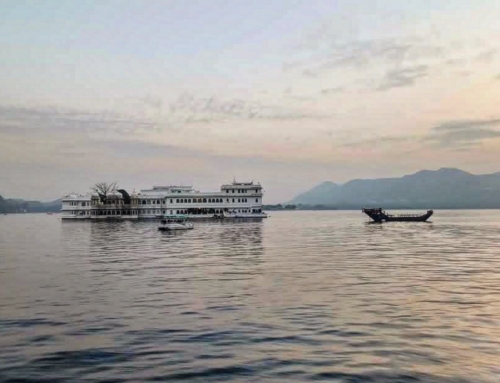
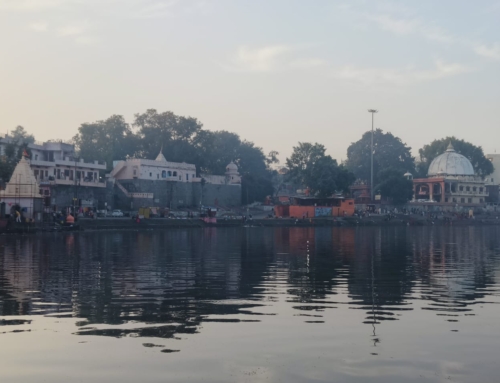
Leave A Comment